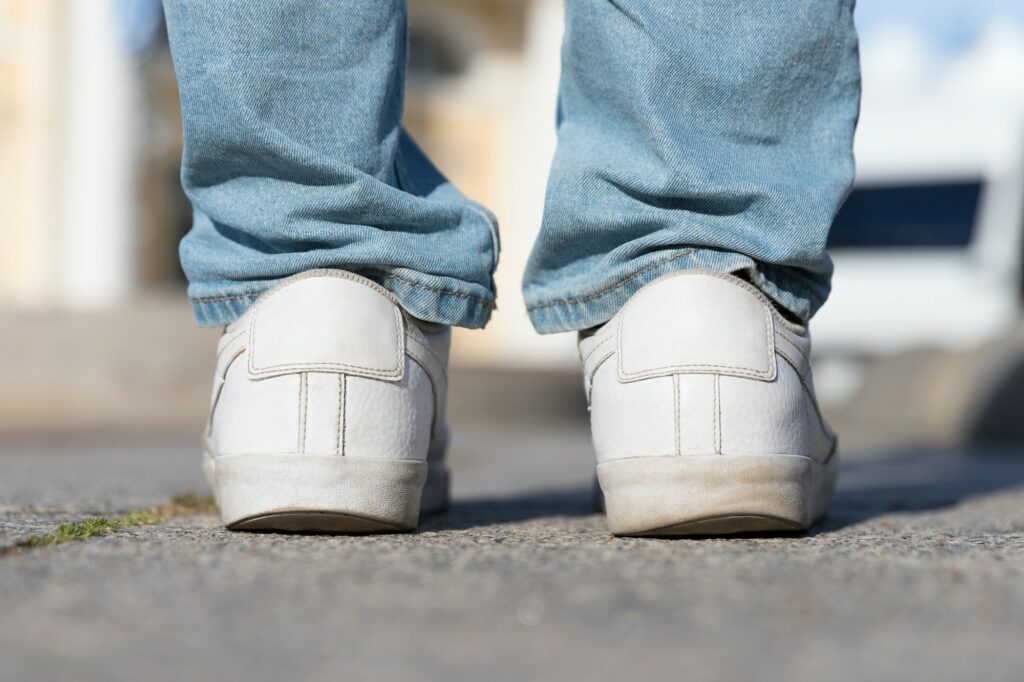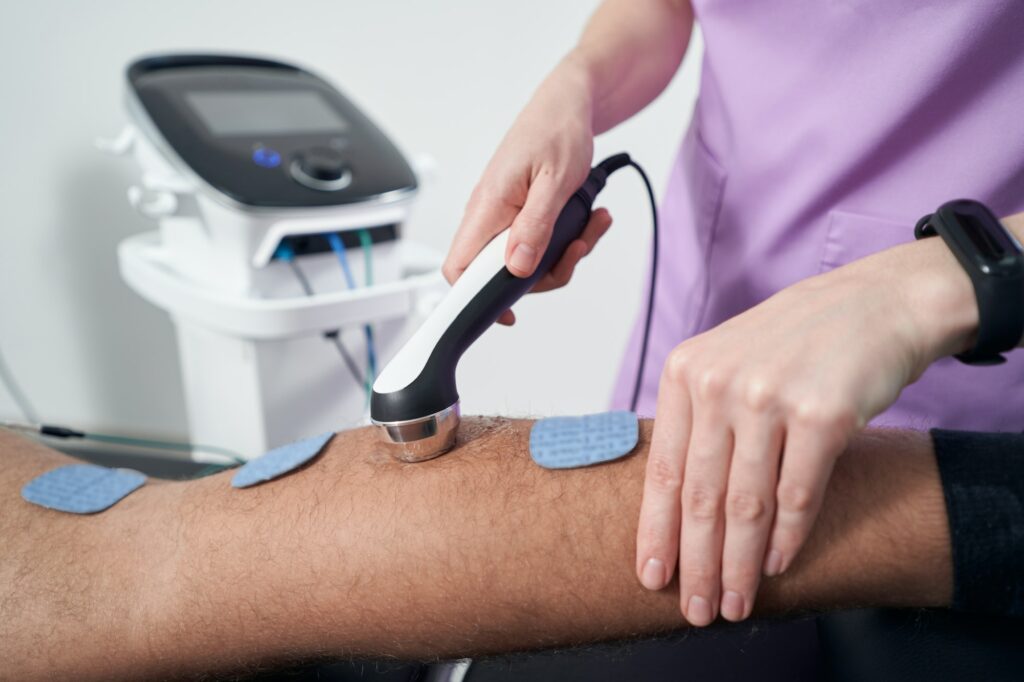Posterior shin splints, also known as medial tibial stress syndrome, is a common condition that affects individuals who engage in high-impact physical activities.
The condition is characterised by pain inside the shinbone, which can be particularly uncomfortable during or after physical activity.
Posterior shin splints, also known as medial tibial stress syndrome, are a common condition that affects athletes, runners, and people who engage in activities that involve repetitive impact on the shins. Unlike anterior shin splints, pain associated with posterior shin splints is usually felt along the inner border of the tibia bone, which runs down the lower leg.

The exact cause of posterior shin splints is unclear, but it is believed to result from repeated stress on the shin bone and surrounding muscles. This stress can cause small tears in the muscle tissue and inflammation in the periosteum, the thin layer of tissue covering the bone.
Some common causes of posterior shin splints include:
Several factors can increase your risk of developing posterior shin splints, including:
If you are experiencing pain in your shins, it is important to consult with a doctor or healthcare professional to determine the cause and receive appropriate treatment.
Posterior shin splints are a painful condition that can be difficult to diagnose. Symptoms of the condition typically include pain in the inner side of the lower leg and tenderness and swelling. The pain associated with posterior shin splints will often worsen during and after physical activity.
The most prominent symptom of posterior shin splints is pain in the inner side of the lower leg. The pain may be described as a dull ache or a sharp, stabbing pain, and may be present during physical activity, after exercise, or even during periods of rest.
Another common symptom of posterior shin splints is tenderness and swelling along the inner side of the lower leg. This may be caused by inflammation of the area’s muscles, tendons, and bones, and can further exacerbate the pain associated with the condition.
Posterior shin splints can also cause a limited range of motion in the affected leg, particularly regarding dorsiflexion (lifting the foot upward). This can make walking, running, and other physical activities more difficult and painful.
If you are experiencing any of these symptoms, it’s important to consult with a medical professional for an accurate diagnosis and treatment plan.
If you suspect posterior shin splints, it is important to seek a proper diagnosis from a medical professional. Your doctor may perform a physical exam to check for tenderness and swelling and may ask you to describe the type and location of your pain.
In addition to a physical exam, your doctor may also recommend imaging tests such as X-rays or MRI scans to rule out other possible causes of your pain, such as stress fractures or compartment syndrome.
The treatment for posterior shin splints depends on the severity of the condition. In most cases, the condition can be managed with non-medical approaches. However, for more severe cases, medical treatment may be required.
While posterior shin splints can be painful and frustrating, there are steps you can take to reduce your risk of developing the condition. Following a few simple guidelines can help keep your shins healthy and pain-free.
The right shoes can make all the difference in preventing posterior shin splints. Look for footwear that offers proper support for your feet and ankles, and that fits well. Avoid worn-out or ill-fitting shoes, as they can contribute to the development of shin splints.
Whether you’re a seasoned athlete or just starting to exercise, gradually increasing your activity levels is important. Sudden increases in exercise can put undue stress on your shins, leading to posterior shin splints. If you’re new to exercise, start with low-intensity activities and gradually work up to more intense workouts.
If you’re engaging in activities that put strain on your shins, such as running or jumping, it’s important to take regular breaks. Allow your muscles and joints time to rest and recover, which can help prevent the development of shin splints.
Strong lower leg muscles can help prevent posterior shin splints by providing additional support to your shins. Consider incorporating exercises that target your calves and shins into your workout routine, such as calf raises or toe taps.
Tight muscles can stress your shins more, leading to posterior shin splints. Stretching regularly can help keep your muscles loose and flexible, reducing your risk of developing shin splints. Focus on stretching your calves, hamstrings, and shins.
Whether you’re running, jumping, or engaging in other activities that stress your shins, it’s important to use proper technique. Avoid overstriding or landing too hard on your feet, as this can contribute to developing shin splints. Work with a trainer or coach to use proper form and technique.
Recovering from posterior shin splints can take time and patience. Depending on the severity of the condition, rehabilitation may involve physical therapy, rest, stretching, and strengthening exercises.

Physical therapy can be an effective way to relieve pain and promote healing. A physical therapist can work with you to develop a customised rehabilitation plan that includes exercises to improve flexibility, strengthen muscles, and reduce inflammation.
Rest and ice are important for reducing pain and inflammation associated with posterior shin splints. Resting from physical activity can help reduce the stress placed on the shins, while applying ice to the affected area can help reduce swelling and discomfort.
Stretching and strengthening exercises can help improve flexibility and strengthen the muscles in the legs and feet. This can help reduce the risk of future injuries and improve your overall foot and leg health.
Once your shin splints have healed, it is important to return to physical activity to avoid re-injury gradually. Start with low-impact activities, such as swimming or cycling, and gradually increase the intensity and duration of your workouts.

While traditional medical treatments are necessary to treat posterior shin splints, natural remedies can also relieve and support recovery. Here are some natural remedies that can help alleviate pain associated with posterior shin splints:
Rest is essential when recovering from posterior shin splints. It is advisable to avoid strenuous activities that may aggravate the condition. Applying ice to the affected area can help reduce inflammation and pain. Wrap a towel around the ice pack and place it on the painful area for 15-20 minutes at a time.
Gentle stretching and strengthening exercises can help reduce pain and prevent the recurrence of posterior shin splints. Strengthening exercises for the calf muscles can also help alleviate pressure on the shin. Consult a physiotherapist for exercises that are specific to your condition.
Massaging the affected area can help increase blood flow and reduce inflammation. It can also help alleviate pain associated with posterior shin splints. Use your fingers or a foam roller to massage the affected area gently.
Turmeric is a natural anti-inflammatory agent that can help reduce pain and inflammation associated with posterior shin splints. Add turmeric to your meals or take turmeric supplements after consulting with your doctor.
Epsom salt is rich in magnesium, which can help alleviate pain and inflammation. Add Epsom salt to warm water and soak your feet for 15-20 minutes. This can help relieve pain associated with posterior shin splints.
While natural remedies can provide relief, it’s important to consult with a doctor if you experience severe pain or if your symptoms persist.